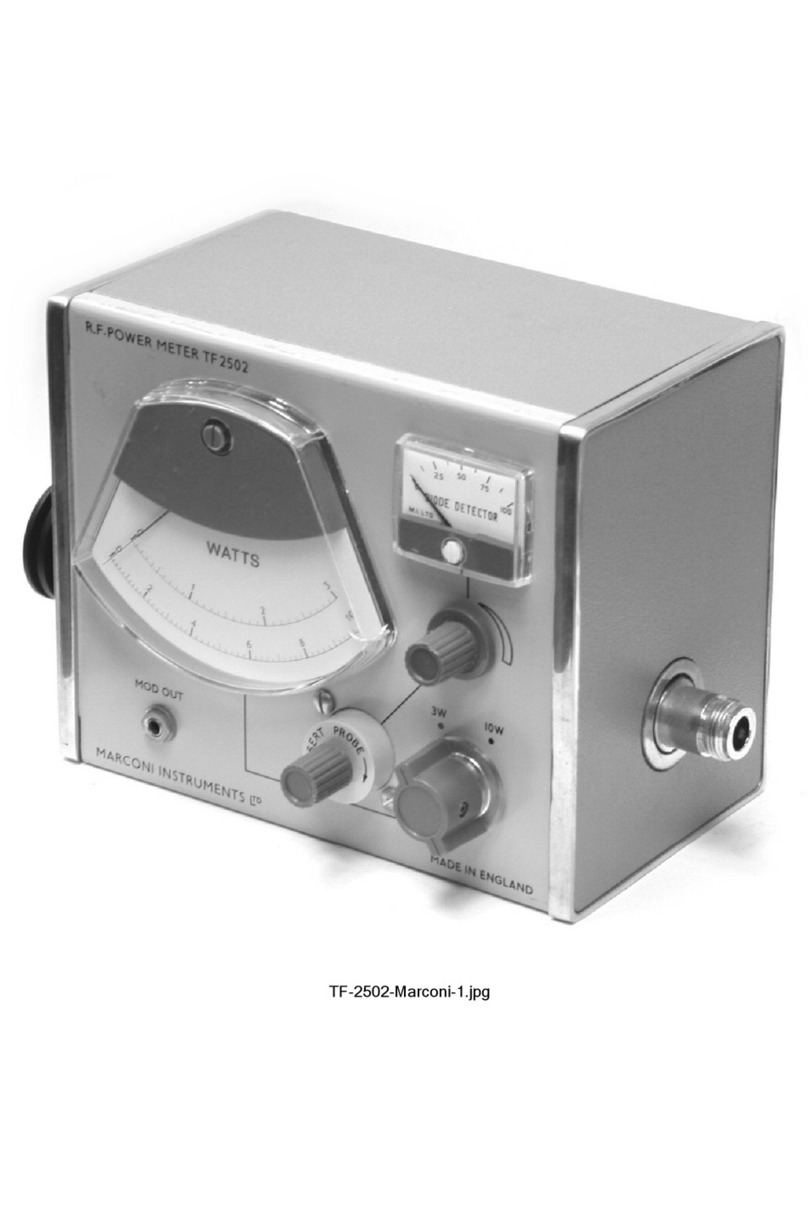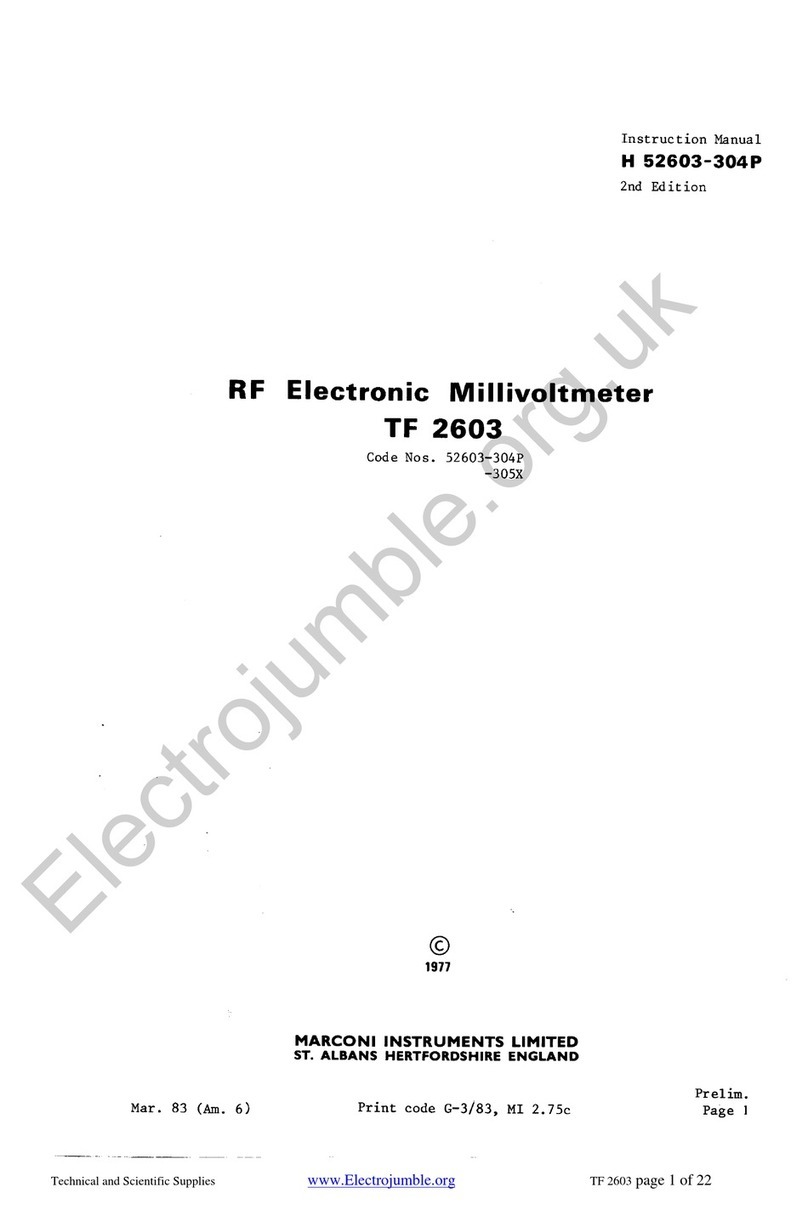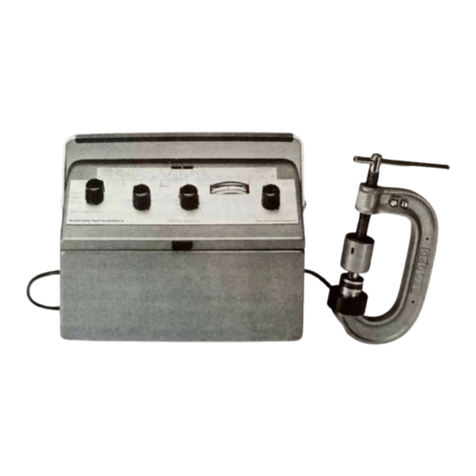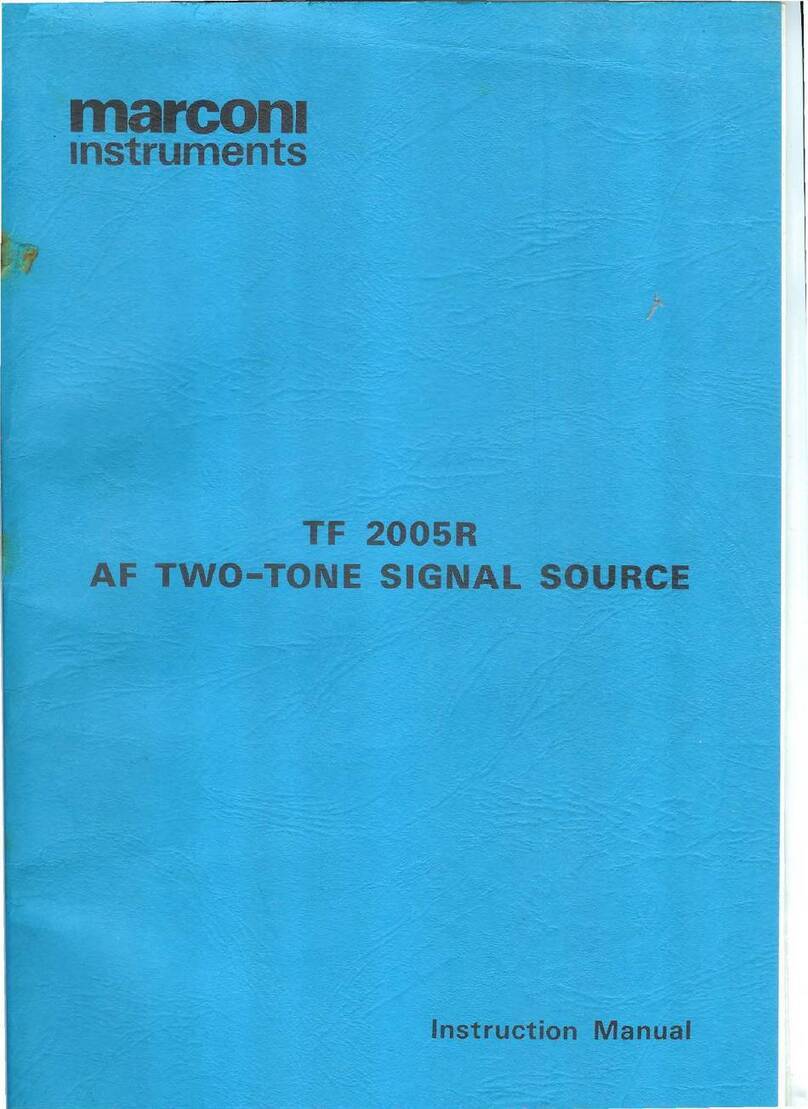
2.3 CONTROLS AND CONNECTIONS ,
«>N/<
oil.
;Mc•li. ih,. h11 111 '111 I.1 i;iinii Mill iIioin iHlif'o MlifM ih.' >n)li|’l \IM''' If I'liOi !
INPUT terminals. Two terminals, one insulated for signal connection. Connection can
be made by banana plugs or spade terminals.
FUNCTION switch (S2). Four position push-butuon switch. i''be Level position ensures only
level measurements are made whereas with the 400 Hz or lOCO Hz push button selected the
Instrument will measure both level and distortion factor.
With the CAL push button selected apre -determined signal is led to the distortion
measuring circuit as a distortion calibration check.
LEVEL RANGE S'A'itch (HI). Consisting of six push buttons, selection of which will deter-
mine the full-scale range of the level fheter. Each button is calibraied in volts and dB’s.
LEVEL meter. Consists of three scales, two voltage scales in black and adB scale in red
(0 dli -T V).' ''' ^
'
'DISTOFiTION RANGE switch (H3)'.' Consisting of six push buttons, selection of whicii will
determine the full-scale range of the distortion meter. Each push button is calibrated in
full-scale distortion percentage and dB's.
DISTORTION meter. Consists of three scales, two distortion fdetor range scales in black
and one distortion scale (dB)_in red. (0 dB =100% distortion factor).
,^
^OPERATION "'co V
The followmg'instriictibns are intended' as a
Distortion Meter. However, because of the
tions will become unnecessary.
detailed guide 'to tiie oj'ieratibn'of the TE' 2337A' Automatic
units inherent simpllci^V continued use bf those instruc-
2.4.1 Preparation for use
Before commencing measurement,
:,(i) .ensure that the rnu.ms transformer ^tapping, and fuse rating aierrUtroct for the supply
in use.
TF 2337A
































